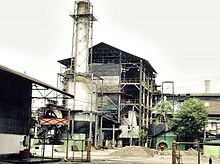Crop Production-Sugar Cane
In 2005, the Philippines is the 9th largest sugar producer in the world and 2nd largest sugar producer among the Association of Southeast Asian Nations (ASEAN) countries, second to Thailand, according to Food and Agriculture Organization of the United Nations Statistics Division. At least 17 provinces located in 8 regions of the Philippine archipelago have grown sugarcane crops, of which the two onNegros island account for half of the country’s total production. As of Crop Year 2009-2010, 29 mills are operational divided as follows: 6 mills on Luzon, 13 mills on Negros, 4 mills on Panay, 3 mills in Eastern Visayas and 3 mills on Mindanao.
The Philippines main agricultural export commodity
Sugarcane is not a sensitive crop and can be grown in almost all types of soil, from sandy loams to clay loams and from acidic volcanic soils to calcareous sedimentary deposits. The harvest period is from October to December and ends in May.
Sugar became the most important agricultural export of the Philippines between the late eighteenth century and the mid-1970s basically because of two reasons: 1) foreign exchange earned and 2) it was the basis of wealth accumulation of some Filipino elite at that time. To ensure the continuous growth and development of sugar industry under the Commonwealth government, Philippine Sugar Administration(PSA) was established in 1937 to oversee the industry.
After the Second World War the Sugar Quota Administration (SQA) replaced PSA in 1951 vis-à-vis with Philippine Sugar Institute (PHILSUGIN), a research agency. During the 1950s and 60s, more than 20 percent income of Philippine exports came from the sugar industry. It declined in the 70s and plunged further in the first half of the 80s to roughly 7 percent. It was during this period when the government acknowledged the existence of crisis in the industry. One of the factors that contributed to the worsening situation of the industry during that time was the depressed market for sugar.
In 1974, there was a dramatic escalation in the world price that peaked at around US$0.67 per pound of sugar. In succeeding two consecutive years, world prices of sugar fell to less than US$0.10 and remain in that situation for few years until it moved upward before the decade ends. During the early 80s, world sugar prices fell again with US$0.03 per pound as the bottommost. Prices recovered to US$0.14 cents per pound then fell again between US$0.08 to US$0.09 per pound at the beginning of the early 1990s.
Milling Sub-Sector
Luzon (6 mills)
- Cagayan Sugar Mill Company (Piat, Cagayan)
- Sweet Crystals Integrated Sugar Mills (Pampanga)
- Central Azucarera de Tarlac (Tarlac)
- Batangas Sugar Central Incorporated (Balayan, Batangas)
- Central Azucarera de Don Pedro (Nasugbu, Batangas)
- Peñafrancia Sugar Mill (Peñafrancia, Camarines Sur)
Negros (13 mills)
- Aidsisa
- Bais-Ursumco
- Biscom
- Dacongcogon
- First Farmers
- Hawaiian-Philippines
- La Carlota
- Lopez
- Ragasa F.C.
- Sagay
- Sonedco
- Tolong (Teves)
- Victorias
Panay (4 mills)
- Passi
- Santos Lopez
- Monomer
- Capiz Sugar Central, Inc. (President Roxas, Capiz)
Eastern Visayas (3 mills)
- Bogo-Medellin
- Durano
- Kananga Sugar Mill (Ormoc, Leyte)
Mindanao (4 mills)
- Bukidnon Sugar Company
- Crystal (Maramag, Bukidnon)
- Davao Sugar Central Company (Hagonoy, Davao del Sur)
- Cotabato Sugar Central Company (Matalam, North Cotabato)
Sugar Cane Production
| Crop Growth Phases | ||||||||||||||||
| ||||||||||||||||




